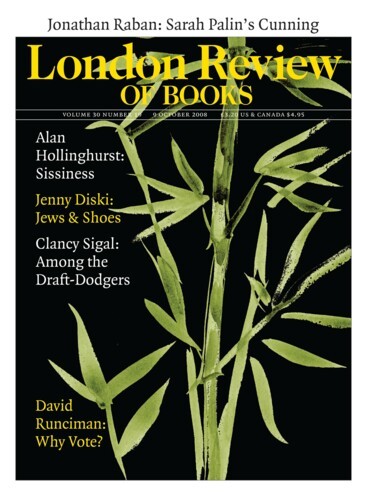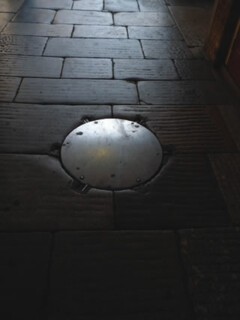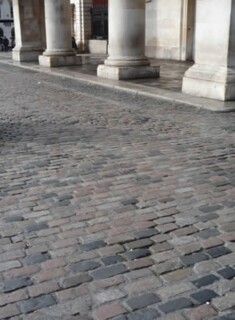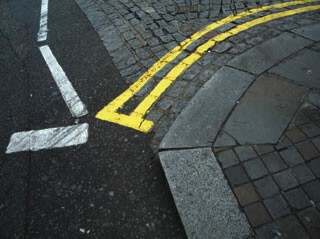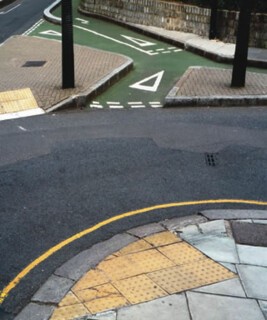Step into the street, look down, and it tells you what to do. Kerbs and gutters separate walkers from drivers. Painted words, lines and changes of material nudge you forward or make you pause. The street surface shows what is going on underground: scars left by repairs indicate new pipe work; trapdoors, lids, covers and grills point to drains, cables, coal holes and cellars. Signals of activity other than that created by people going from place to place proliferate. Responsibility for all this is diffuse.
In the street the concept of ownership is less useful than the concept of rights and obligations. We have the right to walk, ride or drive. Utility companies have the right to bury pipes and cables, drivers have the right to park, builders to fill a skip or unload a lorry. In doing these things we and they are obliged to take account of directives, acts of Parliament and local bylaws. Local authorities have the right to regulate the highway and the obligation to maintain it. Their remit stops at two spits – two spade-depths – down. If your coal cellar runs under the footpath you have an obligation to make sure it supports their paving.
Roadmaking, not the most glamorous civil engineering project, deserves respect. To the engineer a puddle is a reprimand. It is his or her job to see that water is guided towards drains. That requires slopes at very small angles: the shallow curve of the tarmac carriageway, the gentle slope of the pavement, the modest incline of the gutter towards the drain. When you see pavement slabs being laid it looks as though they are being tapped down onto a foundation of sand. In fact it is weak cement: delicate enough to be broken up easily when a new pipe is laid, coherent enough to keep out the water that could wash it away and leave the slab rocking.
The human flow is less easy to manage. Sometimes changes that seem to have nothing to do with streets affect it. The smoking ban has put tables, umbrellas and gas heaters outside eating houses all over London. The mysterious brass studs in the pavement turn out to mark the otherwise invisible border between public road and private apron. One should have guessed. The fashion for outdoor eating may wither in winter, but the perceived width of pavements has permanently narrowed.
Negotiations between different users result in a proliferation of signs, marks, barriers and labels. They disturb the appearance of streets, which look best when they are simple: a granite kerb, York stone slabs, a well-graded carriageway. That is the proper way to underline any distinguished old frontage; it’s what the broad pavement lined with plane trees outside the British Museum does. Jane Austen on tarmac is as much an anachronism as Jane Austen in nylon stockings. But heritage aesthetics must be adjusted to take account of new notions of civic amenity. The cobbles that cover the space between St Paul’s Covent Garden and the market building are proper and picturesque, but if the building were new the bumpy ride they give a wheelchair would have had to be addressed. The line of the granite kerb is regularly broken by angled cast slabs, covered in dimples that tell the blind there is traffic ahead; they allow baby buggies, wheelie bags and scooters an easy crossing. Raised islands divide cycle lanes from car lanes. Barriers dissuade you from crossing upstream or downstream from a pedestrian crossing.
The knockdown argument for more signs, lights and barriers is that they make streets safe. But do they? In Tavistock Place a virulently green cycle lane is divided from motor traffic by a kerbed barrier. Four possible streams of traffic – two of cycles, two of cars – confuse you by requiring additional ‘look left, look right’ responses. It feels dangerous. Recent obituaries in the Independent and the Guardian recorded the achievements of two men who showed that heavy management of this sort is not always the best way. One, Frank Blackmore, invented the mini-roundabout:
During the 1950s and 1960s traffic growth exposed the weaknesses of earlier roundabout designs, which operated without any priority rule. The result was increasing intrusion, land-take and cost. He successfully advocated an ‘off-side priority’ rule, requiring entering traffic to give way to traffic to its right on the roundabout … he then went on to exploit this to create far smaller designs, right down to a painted disc on the road – the celebrated mini-roundabout. All of these designs, particularly minis, were less intrusive, much cheaper, and they significantly reduced congestion and accidents.
The other, the Dutch traffic engineer Hans Monderman
inspired and developed a fundamental change in thinking about the relationship between people, places and traffic. Working in the towns and villages of his native Friesland in the north of the Netherlands, in a traditionally conservative and cautious profession, he succeeded in challenging many long-established assumptions about safety and the relationship between pedestrians and traffic … Monderman pioneered an approach that respected the driver’s common sense and intelligence instead of reliance on signs, road markings, traffic signals and physical barriers.
The redesign of Kensington High Street in 2003 drew on Monderman’s work. Only two materials – York stone and granite – were used, many pedestrian guard rails were removed, traffic signals were combined with lamp-posts, signage was rationalised and kerb build-outs and lay-bys were removed. Since the changes there have been fewer accidents and it seems that drivers, cyclists and pedestrians are all being more careful. More dramatic plans for a kerbless Exhibition Road, shared by people and vehicles, carry the same thinking further.
Pedestrians, like birds in circling flocks, are remarkably good at avoiding one another. Even in the human river that is Oxford Street they rarely bump. It’s a natural ability that should be encouraged.
Send Letters To:
The Editor
London Review of Books,
28 Little Russell Street
London, WC1A 2HN
letters@lrb.co.uk
Please include name, address, and a telephone number.
